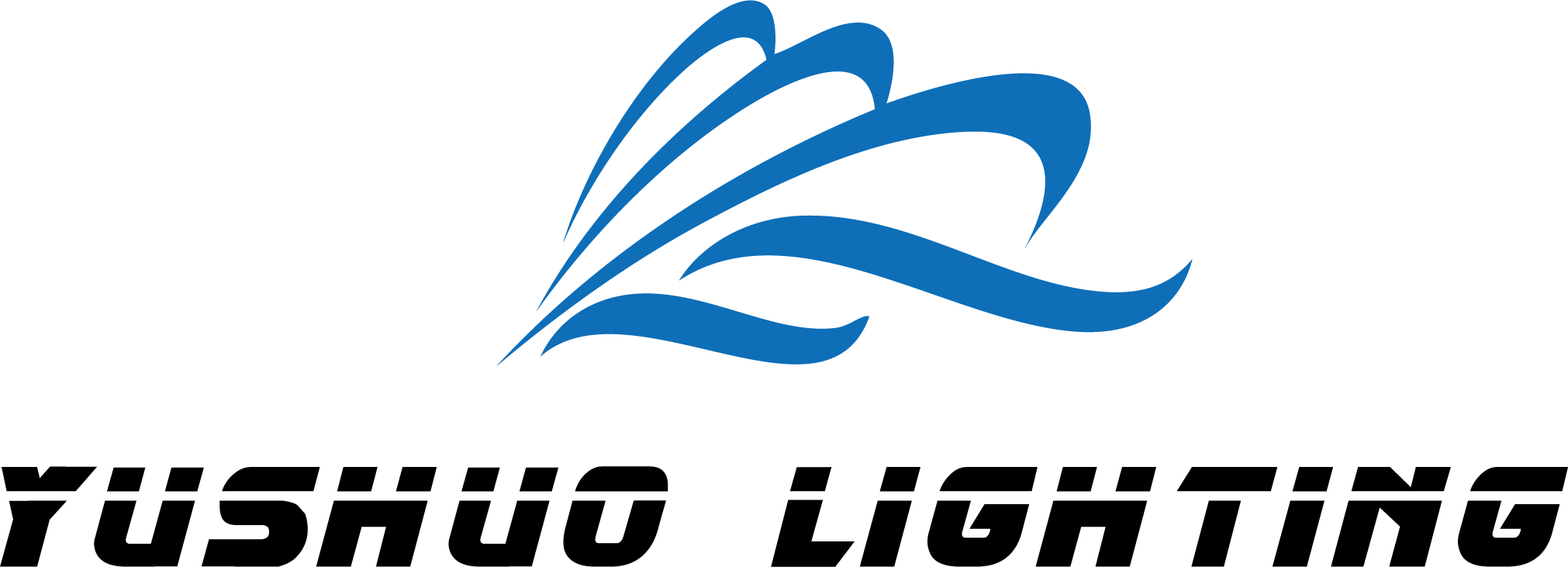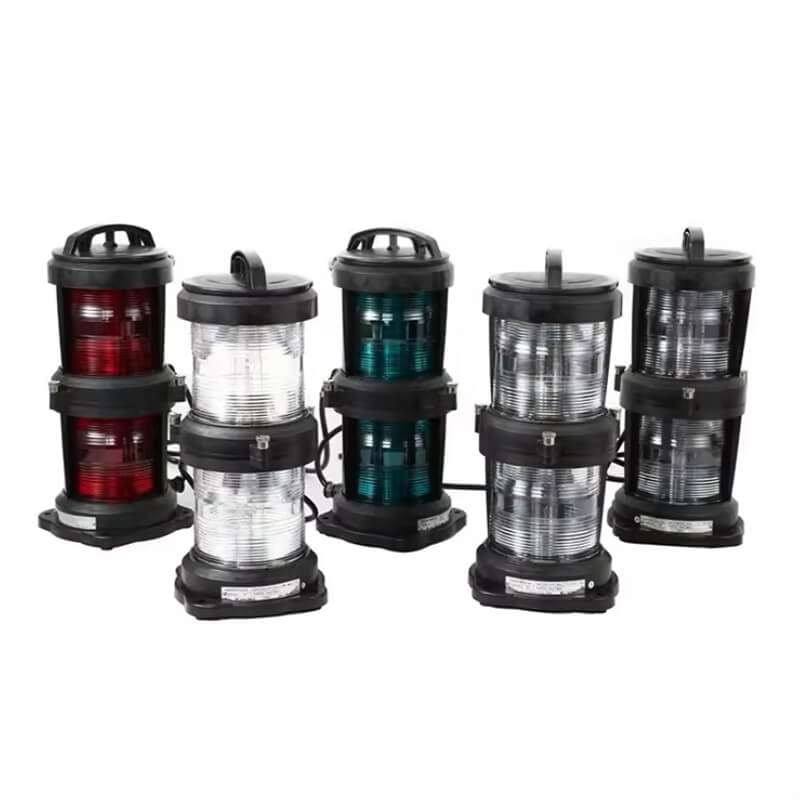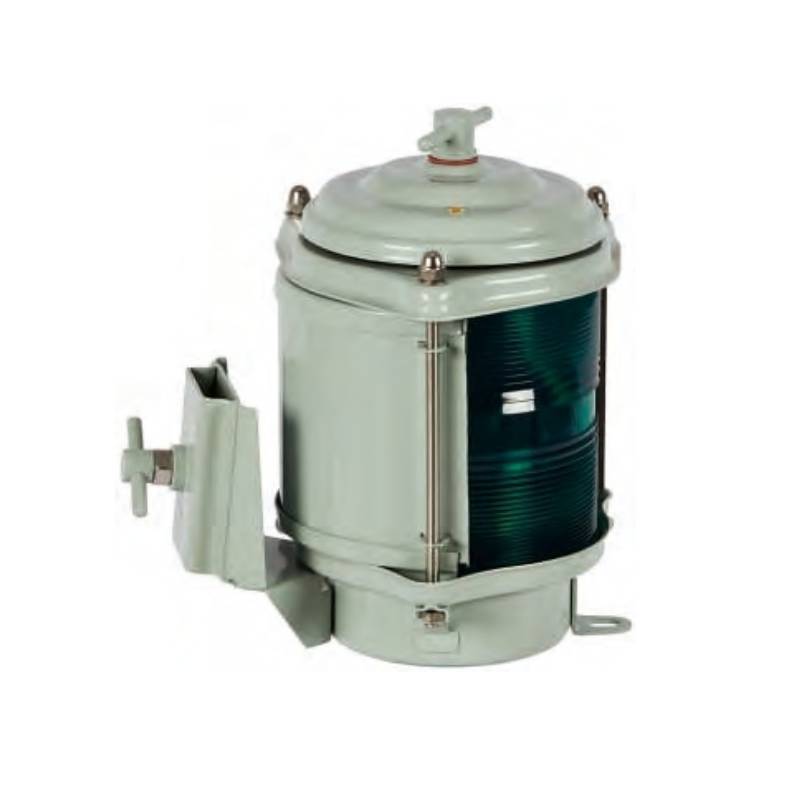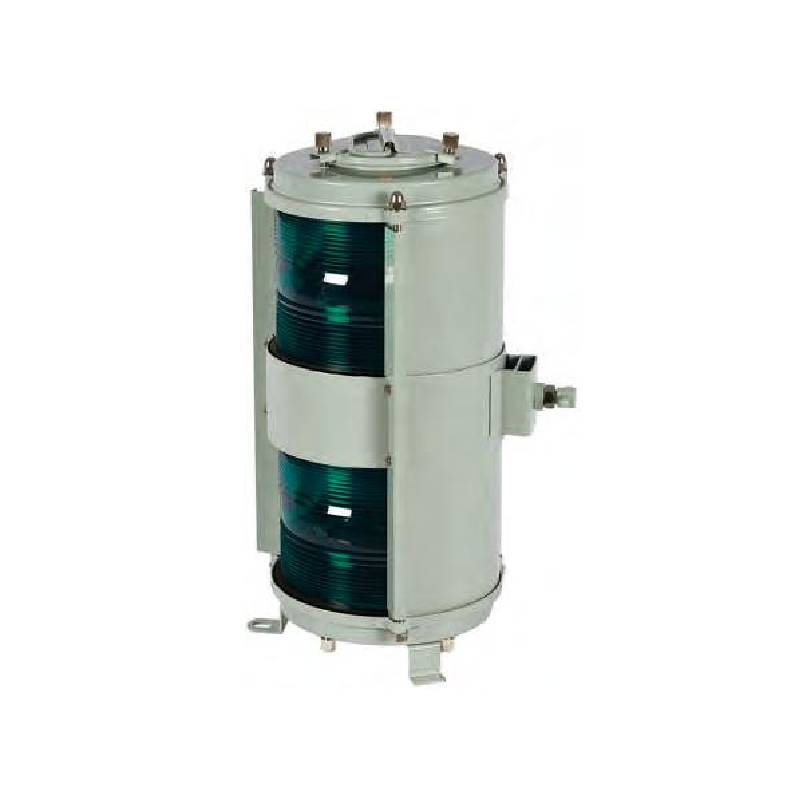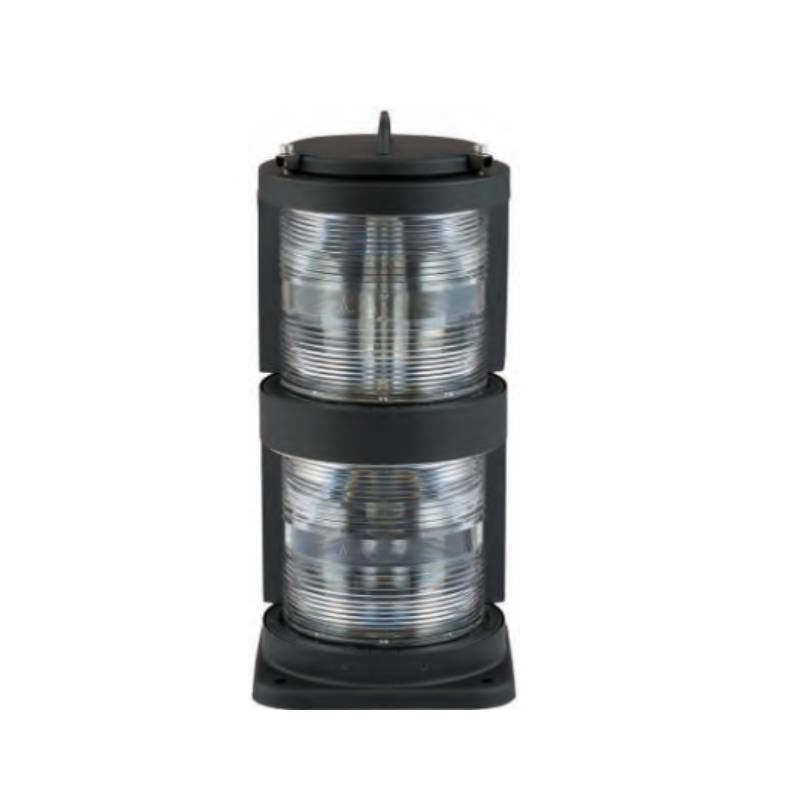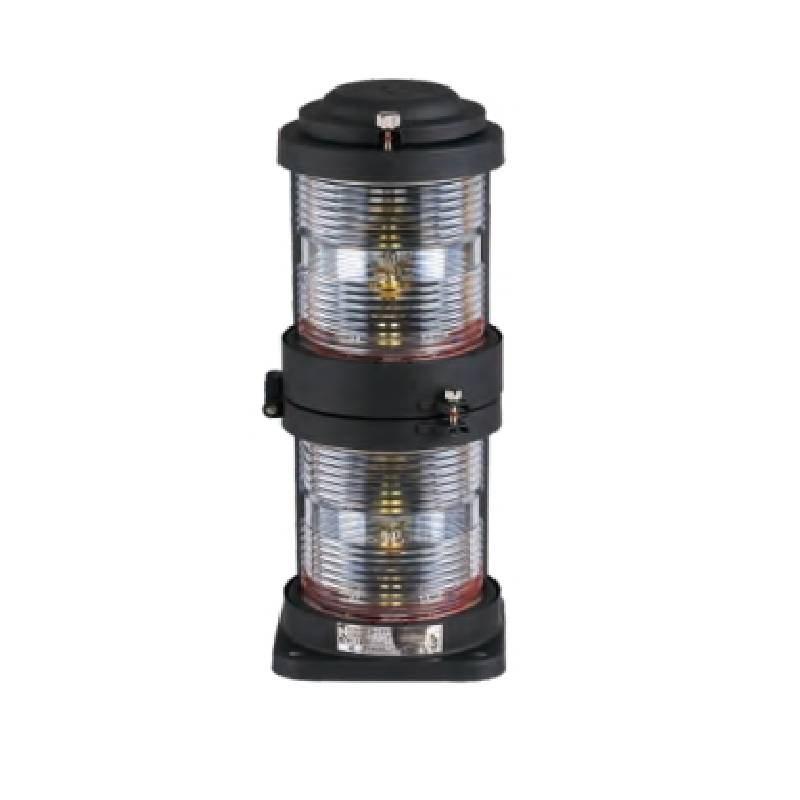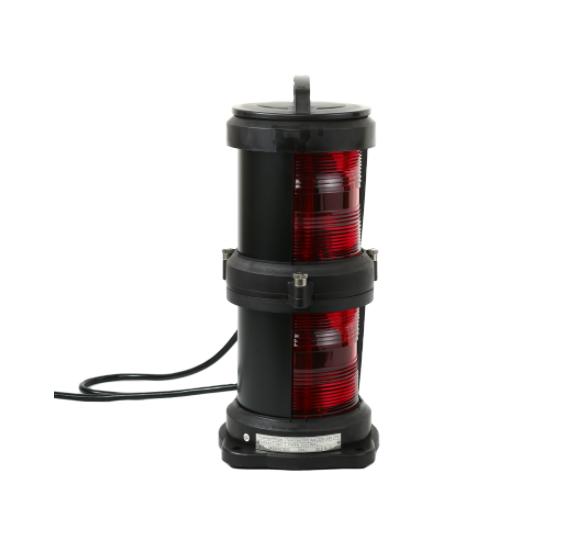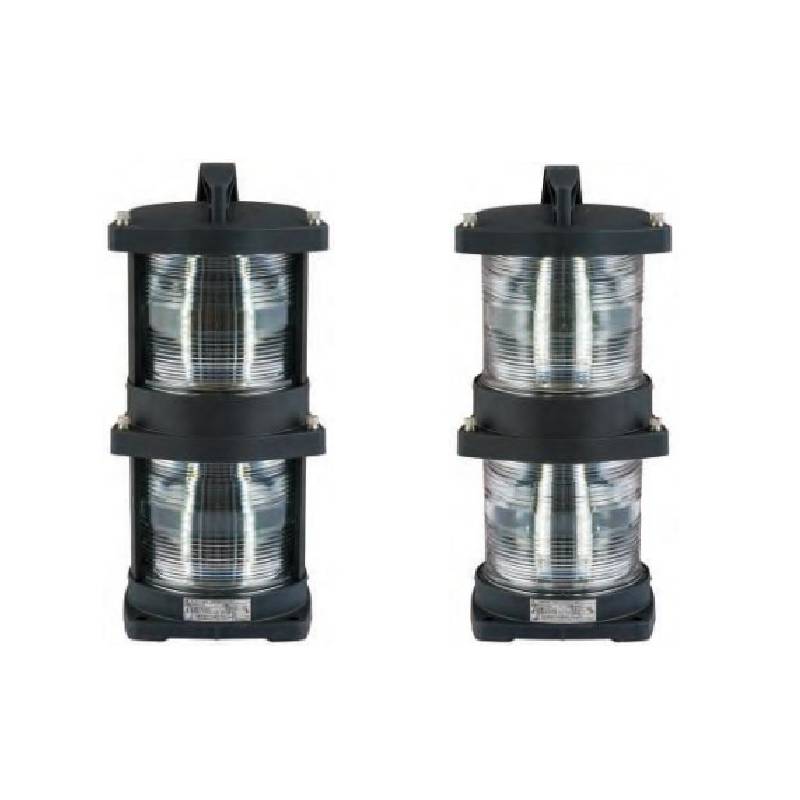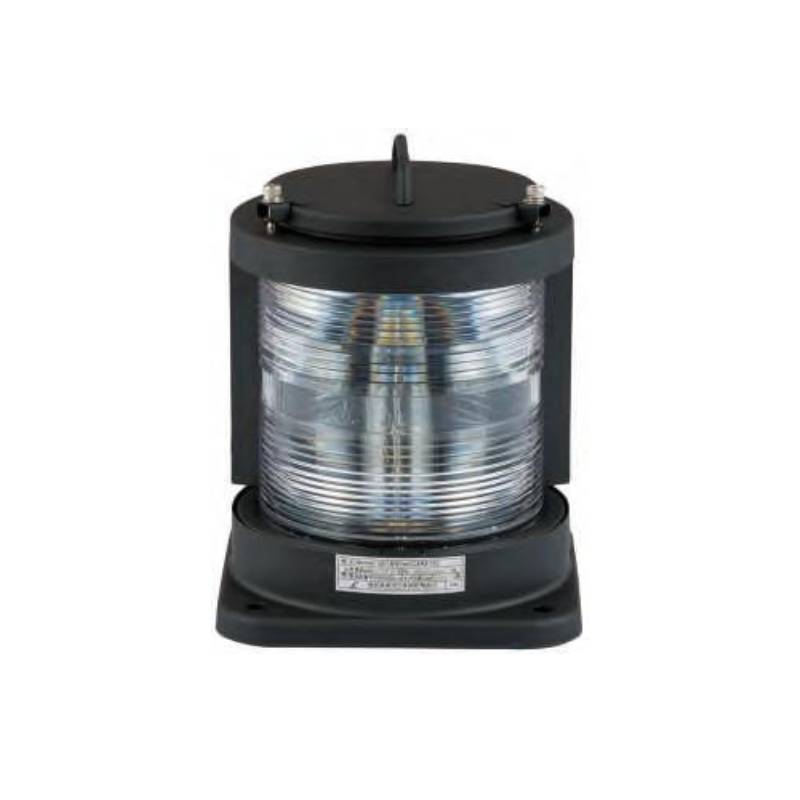How to Ensure Proper Use of Marine Navigation Lights by Crew Members
Table of Contents
Marine navigation lights play a vital role in ensuring vessel safety and maintaining maritime order. However, misuse due to operational errors, insufficient maintenance, or inadequate training remains a challenge, sometimes leading to severe accidents. To minimize risks, crew members must thoroughly understand navigation light regulations and follow strict operational guidelines. Shipping companies should also implement effective management protocols to ensure compliance. This article explores best practices for using marine navigation lights, focusing on regulatory compliance, proper operation, maintenance, and supervision.
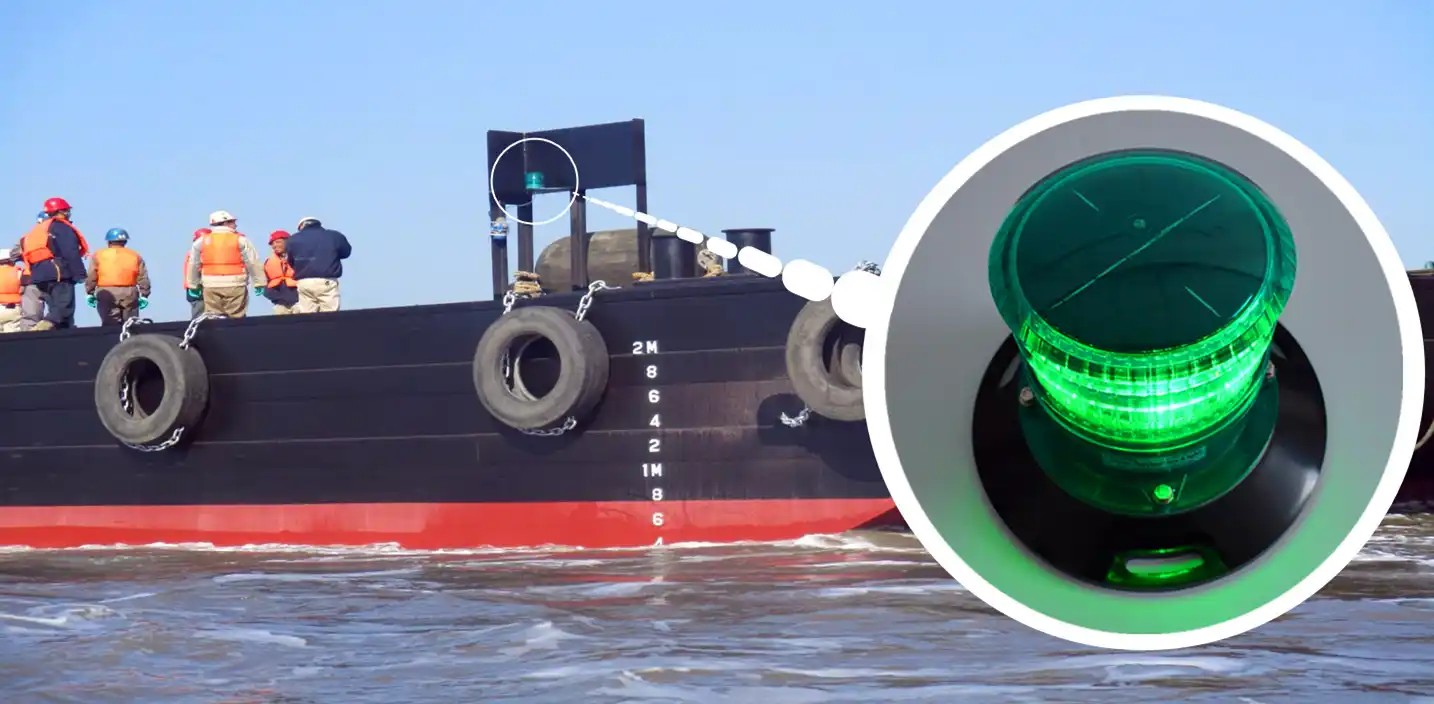
Basic Concepts of Marine Navigation Lights
Marine navigation lights are essential for nighttime sailing and low-visibility conditions, helping vessels communicate their position, direction, and status. According to the International regulations for marine navigation lights, all vessels must be equipped with appropriate navigation lights based on their size and type. For instance, ships over 50 meters must have two masthead lights placed at a regulated distance apart.
Marine navigation lights can be categorized by location and function:
| Light Type | Location | Primary Function | Light Color |
| Port and Starboard Lights | Port and starboard sides | Indicate the left and right direction of the vessel, helping other ships identify the outline of the hull | Port: Red; Starboard: Green |
| Bow Light | Bow | Shows the front of the ship, helping determine the navigation direction | White |
| Stern Light | Stern | Indicates the position of the ship’s rear, reminding vessels behind to exercise caution | White |
| Masthead/Deck Light | Deck and upper levels | Enhances overall visibility and serves as an auxiliary indicator light | White or other colors (as per regulations) |
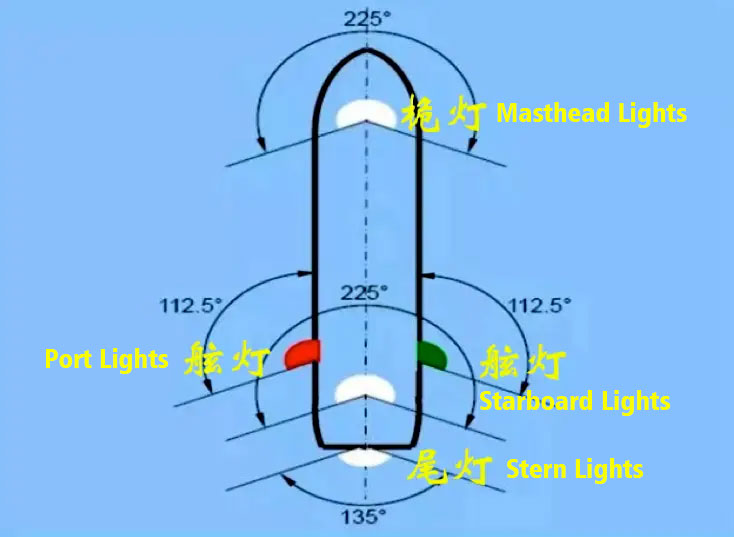
Through the above configuration, various marine navigation lights work in coordination to provide comprehensive navigation signals for the vessel, ensuring maritime safety.
Laws, Regulations, and International Standards
The International Maritime Organization (IMO) enforces clear guidelines on navigation lights. COLREGs rules for marine navigation lights are outlined in Articles 20-31, specifying lighting configurations for different vessel types. For example, ships over 50 meters require two masthead lights with a separation of at least a quarter of the vessel’s length.
To comply with these regulations, many shipping companies implement structured procedures, such as a “Lighting Operation Inspection Checklist,” which verifies key lighting parameters before departure. A best practice is the “Two-Person Cross-Check System” introduced by the Singapore Maritime and Port Authority, which mandates both the duty officer and engineer to inspect and confirm lighting functionality, reducing operational errors by 67% in certain fleets.
| Regulatory Aspect | Domestic Requirements | International Standards (IMO) |
| Lighting Configuration | Must comply with national maritime codes | Follow COLREGs requirements |
| Color Standards | Must meet national standards | Red, green, and white as per COLREGs |
| Inspection Frequency | Mandatory periodic checks | Regular maintenance recommended |
| Emergency Procedures | Immediate fault reporting required | Backup plans and emergency lighting necessary |
Crew Training and Education
Regular Training on the Use of Marine Navigation Lights
To ensure correct use of marine navigation lights, crew members must undergo systematic training, covering theoretical knowledge, practical operation, and emergency response. Effective training programs incorporate classroom instruction, video tutorials, VR-assisted simulations, and hands-on practice.
Routine assessments, including theoretical exams and real-world drills, reinforce learning. Advanced VR technology enhances crew familiarity with light signals, improving recognition speed and reducing response time under real sailing conditions.
Strengthening Crew Awareness of the Importance of Navigation Light Regulations
Strict adherence to navigation light regulations is crucial for preventing signal confusion and reducing collision risks. Any negligence in operating these lights can compromise vessel visibility, leading to potential accidents. Crew members must recognize that proper lighting use is a fundamental part of regulatory compliance and maritime responsibility.
To foster a strong safety culture, captains and senior officers should lead by example, emphasizing the importance of navigation lights and ensuring every crew member remains vigilant and disciplined in their usage.
Practical Operation and Maintenance Management
In actual navigation, the proper functioning of marine navigation lights is a key factor in ensuring maritime safety. Therefore, crew members must strictly follow standard operating procedures for daily inspection and maintenance of navigation lights to ensure that the equipment performs its intended function in various environments.
Daily Operating Procedures
| Inspection Stage | Inspection Item | Details | Record Requirements/Follow-up Actions |
| Pre-departure Inspection | Appearance Inspection | Check whether the lamps are damaged, worn or dusty | Record the inspection results in detail in the “Pre-departure Inspection Checklist” |
| Functional Inspection | Confirm that the color, brightness and flashing frequency of various navigation lights (side lights, bow lights, stern lights, etc.) meet the regulatory requirements | Record the inspection results in the “Pre-departure Inspection Checklist” | |
| Power Connection | Check whether the power supply system is normal and ensure that the wire connectors are firm and not loose | Record in the inspection checklist and provide timely feedback if any abnormalities are found | |
| Fixed Installation | Check whether the navigation lights are firmly installed to ensure that they are not easy to fall off under vibration or severe sea conditions | Record the inspection results in the “Pre-departure Inspection Checklist” to facilitate tracking of problems | |
| In-flight Monitoring | Abnormal Observation | Keep an eye on the lights for abnormal flickering, partial extinguishing or color deviation. | Abnormal situations should be reported in a timely manner. There is no need to record too much, but they should be noted in the log. |
| Fault Handling | If any abnormality is found, immediately activate the backup lights, report to the captain and take measures according to the emergency plan. | The processing process should be recorded in detail to facilitate subsequent analysis and improvement. | |
| Log Recording | Record any abnormal situation and handling process in real time | The log records should be complete to facilitate subsequent accident analysis and improvement work | |
| Re-inspection After Port | Equipment Review | After the voyage, check all navigation lights again to confirm that the equipment has not been damaged during the voyage | Inspection results are recorded in the review report |
| Cleaning and Maintenance | Clean dust and sea salt deposits on the surface of the navigation lights to keep the equipment clean and in good condition | Record cleaning and maintenance conditions, and arrange follow-up repairs when necessary | |
| Status Confirmation | Confirm that all equipment is operating normally and arrange further repairs or replacements if necessary | Maintenance records must be archived as a basis for subsequent equipment management and improvement |
Maintenance Management Measures
A structured maintenance plan should be followed to prevent failures. For ships frequently exposed to harsh conditions, waterproof marine navigation lights are recommended to withstand moisture and salt corrosion. Additionally, durable marine navigation lights for ships should be prioritized to ensure long-term functionality in extreme weather.
Below is a typical maintenance management schedule (for reference)::
| Maintenance Items | Inspection Content | Inspection Frequency | Responsible Person |
| Appearance Cleaning | Clean the surface of the light fixtures and lamp covers; remove salt mist and dust | After each voyage | On-duty crew |
| Function Testing | Check the light brightness, color, and flashing frequency | Once a week | Maintenance engineer |
| Equipment Fixity | Check the installation stability of the lights; tighten screws and brackets | Once a month | Maintenance engineer |
| Electrical Connection Check | Inspect wire connections, fuses, and the power supply system | Once a quarter | Ship electrician |
Fault Emergency Handling
During navigation, navigation lights may malfunction due to various reasons, such as circuit issues, bulb damage, or environmental factors (e.g., intense vibrations, seawater corrosion) leading to reduced performance. To ensure safe navigation, the crew must quickly respond according to the pre-established emergency procedures and take effective measures to restore the normal operation of the navigation lights.
Initial Diagnosis
When a malfunction in the navigation lights is detected, the on-duty crew should immediately perform an initial diagnosis to determine the nature and extent of the fault. First, observe whether the light is completely off, flashing abnormally, or has color distortion, and record the specific symptoms. If the problem occurs with only one light, it may be a localized device failure; if multiple lights fail simultaneously, the crew should check the circuit or power supply system for issues. Additionally, the crew should assess whether external factors (e.g., adverse weather, ship vibrations) might affect the equipment’s performance and document the preliminary diagnosis in the navigation log for later analysis.
Activating Backup Equipment
To prevent the interruption of navigation signals and ensure the ship’s visibility, once a navigation light failure is detected, the crew should immediately activate backup equipment. For critical lights such as the side lights or bow lights, the crew should quickly switch to the backup light system, ensuring the continuity of navigation signals. During this process, it is essential to confirm that the backup equipment’s power supply is functioning properly, the light source meets navigation requirements, and the emitted signal is clear and visible. In emergencies, the crew can also use handheld signal lights or other temporary lighting devices to ensure the ship remains identifiable by surrounding vessels in low visibility or nighttime conditions.
Reporting the Issue and Repair
After implementing the initial response measures, the crew must promptly report the fault to the captain and relevant maintenance departments, providing detailed information, including the time of the fault, symptoms, and preliminary diagnosis. If the situation is critical, such as multiple lights failing simultaneously or if the backup system cannot be activated, the captain should quickly assess the situation and decide whether the navigation plan needs adjustment or if assistance from maritime authorities is required. For minor repairs that can be done onboard (such as bulb replacement or circuit checks), the crew should follow the repair manual to restore normal function as quickly as possible. For more serious issues requiring professional technical support, the crew should contact shore-based repair services and arrange for maintenance at the nearest port to prevent further disruption to the voyage.
Record Keeping
Each fault handling process should be thoroughly recorded and filed in the “Equipment Fault Handling Log.” The record should include the specific nature of the fault, initial diagnosis, emergency measures taken, repair process, and the final solution. Additionally, it should note whether similar faults have occurred in the past to help the technical team analyze the data and identify potential systemic issues, ultimately optimizing the equipment maintenance strategy. Regularly summarizing and analyzing this fault data can help ship management departments identify weak points in the equipment and improve preventive maintenance measures. It may also assist in selecting more reliable navigation light products for future purchases.
With a well-established fault emergency handling process, the crew can restore the normal operation of the navigation lights in the shortest possible time, accumulate practical experience, and continuously improve their equipment management and fault troubleshooting capabilities, thereby further ensuring the safety of the vessel’s navigation.
Supervision and Feedback Mechanism
To ensure the implementation of daily operations and maintenance tasks, the captain and management team should establish regular inspection and supervision mechanisms:
- Regular Audits: The captain should regularly review inspection records and fault logs to assess the equipment’s condition and maintenance effectiveness.
- Continuous Improvement: Based on audit results and feedback, maintenance procedures and operation manuals should be updated promptly to continuously improve management standards.
- Training Updates: Regular training should be conducted for the crew on equipment operation and fault handling, incorporating the latest technologies and case analyses to ensure they are up to date with the most recent maintenance knowledge.
Through these detailed and systematic operation and maintenance management measures, the crew can ensure that the vessel’s navigation lights are always in optimal condition during each voyage, thereby providing solid protection for ship safety.
Finding Reliable Marine Navigation Light Suppliers
When selecting navigation lights, it is essential to work with reputable marine navigation light suppliers who provide waterproof marine navigation lights that meet International regulations for marine navigation lights. High-quality suppliers ensure compliance with COLREGs rules for marine navigation lights and offer products that withstand harsh marine environments.
With technological advancements, intelligent monitoring systems and remote diagnostics will become more widely used in the management of ship navigation lights. This not only increases the early detection rate of equipment faults but also significantly reduces accident risks. In the future, ship management departments, training institutions, and maritime regulatory agencies need to work together to drive the industry towards smarter and more standardized operations.
We call on all shipping companies and crew members to continuously enhance their focus on the proper use of ship navigation lights. Through scientific training, strict inspections, and comprehensive emergency plans, we can collectively create a safer and more efficient maritime environment. Only by doing so can we ensure the safety of every crew member and vessel in the ever-changing maritime environment.
